Snake plants, or sansevieria, are one of my favorites to keep around the house. They’re beautiful, they clean the air, and they’re very very hard to kill. This makes them perfect for beginners or those of us who are just busy and occasionally forget to water our plant babies!
While snake plants don’t need much care, every three to five years, you do need to repot them to keep them in their best shape. If you’ve never repotted a plant before, the prospect of pulling any plant out of the soil, cutting its roots, and replanting can be intimidating.
But snake plants are very forgiving. Just follow a few steps, and your snake plant will be happily nestled in its new home and ready to thrive for another few years!
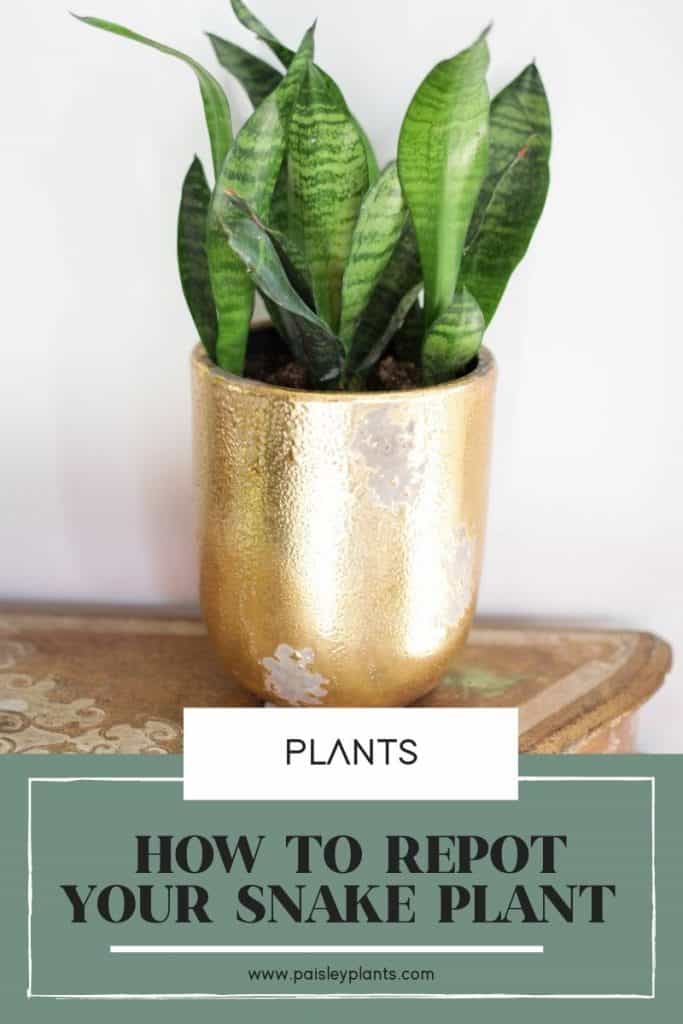
This post includes affiliate links.
Table of Contents
How To Tell Your Snake Plant Needs To Be Repotted
Snake plants love shallow, small pots, and they actually like to be a bit rootbound. Big, deep pots mean more soil, and more soil means more wetness the snake plant needs to contend with. And a wet sansevieria is not a happy plant!
Snake plants don’t mind having denser roots, but if they are severely rootbound, they will eventually die.
What’s Rootbound?
Any plant with excess, spiral or matted root growth is said to be rootbound. It’s most often seen in indoor plants that haven’t changed pots since their purchase from a nursery.
Roots need air, and they get their fair share from gaps between soil particles. Therefore, a rootbound plant is not sending roots out into surrounding soil, perhaps due to space constraints. If the situation is not rectified, the plant will eventually choke itself.
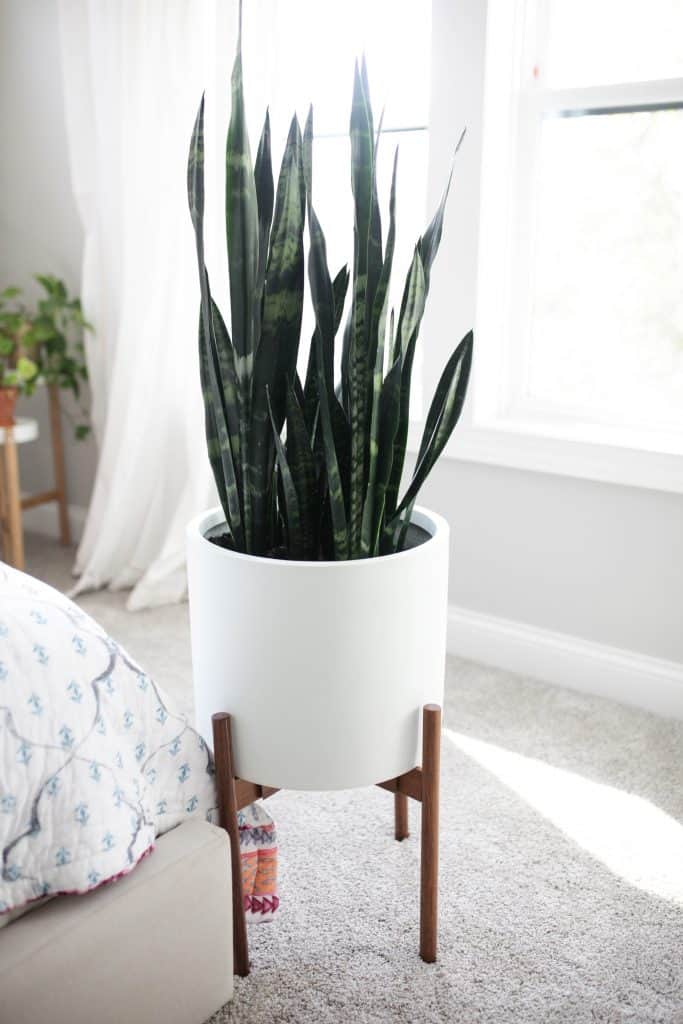
Signs It’s Time To Repot
So how can you tell whether your snake plant needs repotting if it enjoys a tight fit? One of the easiest ways to determine whether your sansevieria needs repotting is to check the bottom of the planter.
To do so, gently lift the whole pot and turn it sideways. If you see stray roots sticking out of the drainage hole, then it’s time to invest in a new pot.
Other signs that it’s time to repot:
- Cracked pots
- Stunted plant growth
- Despite watering consistently, the soil dries up quickly
- Droopy leaves or yellowing of leaves
- Water drains out too quickly
- Unexplained leaf shedding
- Roots at the surface
What Time of Year To Repot Snake Plant

While snake plants seem basically indestructible, you still need to be careful and follow basic repotting rules.
If possible, repot a plant when it’s not in its active growth phase. This means you need to aim for early spring or late winter, as this is the dormant stage for a snake plant.
However, if you notice that your snake plant is too rootbound, you can repot it immediately. Since sansevieria is a hardy plant, it should recuperate fairly quickly.
How To Repot a Snake Plant
Follow the simple steps below to avoid harming your sansevieria while repotting it:
- Find a pot that is one size bigger than your plant’s current pot. For instance, get an 8” pot if you currently have a 6” one.
- Fill the pot two-thirds full with fresh potting mix, then dig a well in the center of the soil.
- Remove your plant from its current pot and carefully brush away the soil.
- Inspect the roots for diseased sections or root rot, and remove these parts — don’t worry; your plant won’t die from root pruning.
- Gently untangle the roots. If they’re too dense, use a garden cutter to prune the roots. Experts recommend untangling roots before repotting as it prevents root-binding.
- Place the snake plant in the well you dug and press fresh soil around it firmly. Ensure the root ball is only 2 to 3 inches below the rim of the planter.
- Fill the edges around the plant with soil or compost.
- Place the snake plant in indirect sunlight and water it thoroughly.
What Kind of Pots Do Snake Plants Like?
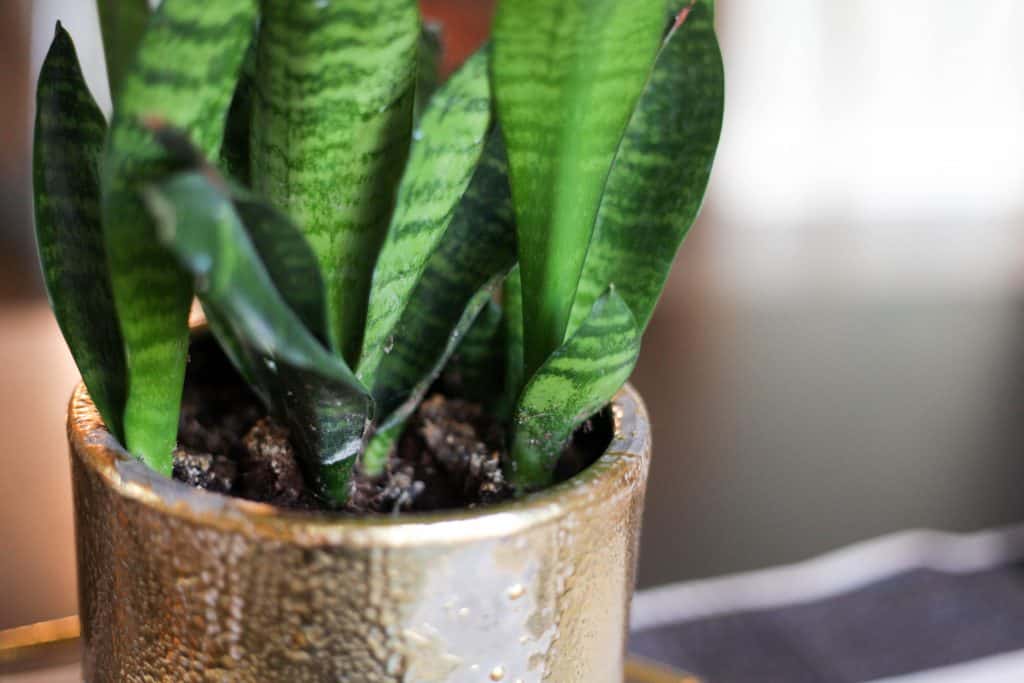
Size
Never go for a pot that is several sizes bigger than your snake plant’s current residence. You might think you’re giving yourself more time before you have to repot again, but your snake plant won’t thrive in a big pot.
They prefer smaller pots since they have a shallow root structure and don’t like overly wet soil. Keeping your sansevieria in a shallow pot means it will drain quicker, leaving your plant’s roots dry.
Also snake plants tend to grow slowly when planted indoors, making a large pot unnecessary.
Do, however, keep in mind that the plant leaves can grow to be too heavy. So pick a shallow but wide pot that will not topple over easily.
Material
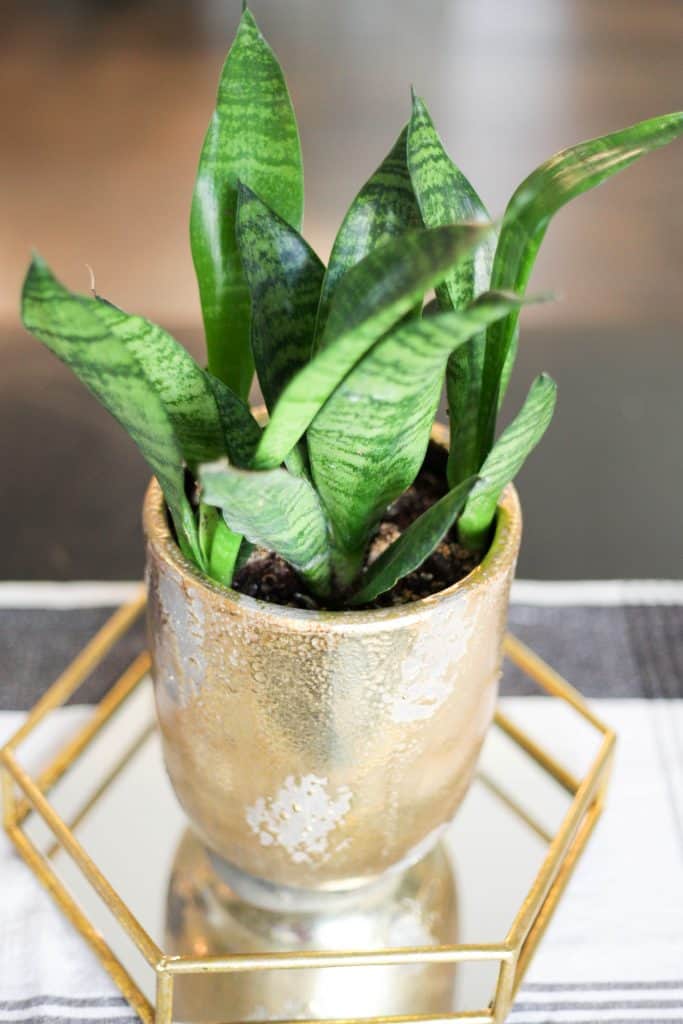
Terracotta clay pots are porous and naturally drying, characteristics that allow them to remove excess water from the soil. Since sansevierias don’t like extra moisture, terracotta clay pots are perfect for them.
Not just that, these pots are easily available and budget-friendly. You can find them in varying shapes, sizes, beautiful patterns, and textures.
Before you finalize a pot, ensure it has sufficient drainage holes. If not, waterlogging will occur, and the roots will rot. If needed, you can drill a few holes before the plant is potted.
Since snake plant roots are thick and strong, they can easily crack plastic pots. If you intend on letting your sansevieria grow untamed in a pot, try a cement one.
Best Potting Soil
Don’t let their appearance fool you — sansevierias are succulents so they need very little water. Excessive watering or water stagnation within or outside the pot will lead to root rot.
To ensure your plants don’t die from watering-related issues, plant them in a succulent potting mix. Even a soilless potting mix will work as it provides adequate drainage.
Perlite, sand, and vermiculite are quintessential components of a succulent potting mix. But, if a potting soil mixture is not readily available to you, here’s how you can DIY your way to the perfect potting soil for your snake plant.
You will need:
- Two parts perlite or coarse sand
- One part peat moss or coconut coir
- One part potting mix
Garden soil is a no-go as it gets too heavy for snake plants.
Can I Divide My Snake Plant When Repotting?
Yes, absolutely! One of the great benefits of owning a snake plant is that you can fill your house with them without buying another. Snake plants reproduce through rhizomes that grow from axillary buds. Eventually, rhizomes grow roots and shoots, developing into new plants.
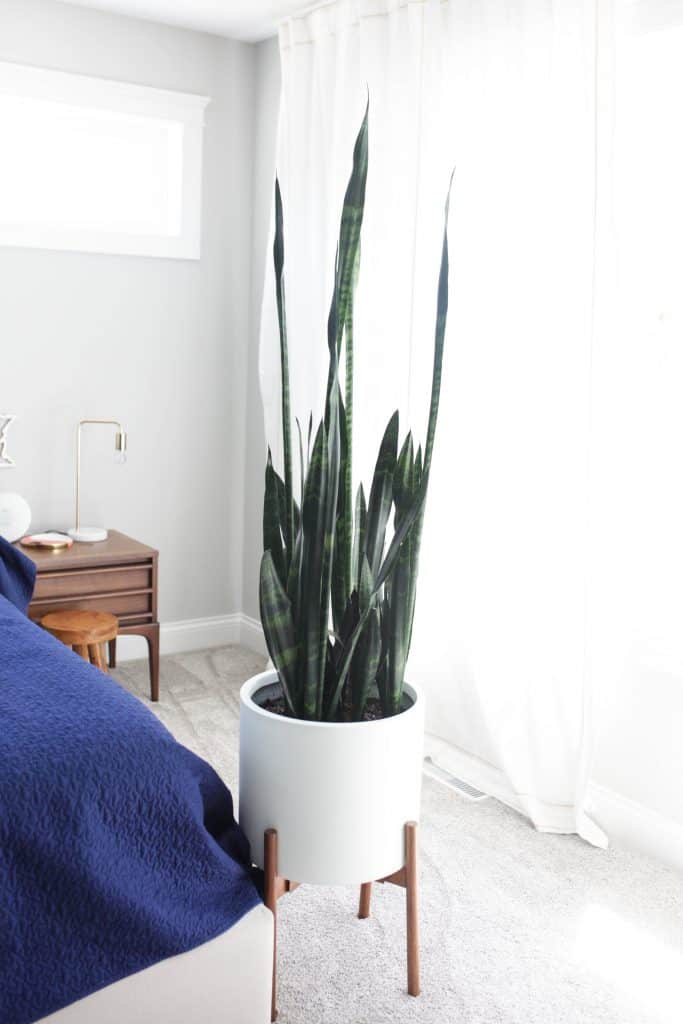
If you don’t separate your new snake plants from their parent plant, your pot will become overcrowded. It will also lead to root-binding. When so many plants struggle for the same nutrients, they will be far from healthy.
Dividing is a simple process.
- Carefully remove the snake plant from the pot and inspect its root ball.
- White or brown roots are healthy, while sticky or black roots imply root rot. Prune the unhealthy sections before dividing.
- Identify thick sections at the base of the plant that you can pull out.
- Find the thick root that connects each section and gently cut through it.
- Shake the separated clump free from the mass of thready roots.
- Repot the new sections in different pots.
Care After Repotting
Snake plants that are divided incorrectly do suffer from repotting plant stress. Signs include yellowing of leaves, wilting of the entire plant, etc. The best way to help your plant recover is to provide it with all the pampering it deserves.
If the dividing and repotting went well, your snake plant will thrive in its new home. But general care tips need to be followed.
Here’s what you need to do:
- Water thoroughly and leave your plant in indirect sunlight for up to two weeks.
- Avoid fertilizing your plant till it has recovered, as fertilizer can burn freshly cut roots.
- Don’t overwater as freshly cut roots are prone to fungal infections.
- Snip off all the droopy, wilted leaves.
Now that you have repotted your snake plant, you can sit back and relax as you watch your old and new plants grow and flourish.
If you need a bit more snake plant care tips, you’re in luck Head to this post for everything you need to know about caring for your snake plant.
Be sure to check out another snake plant – the unique looking Whale Fin Plant or the circular Sansevieria Cylindrica!

